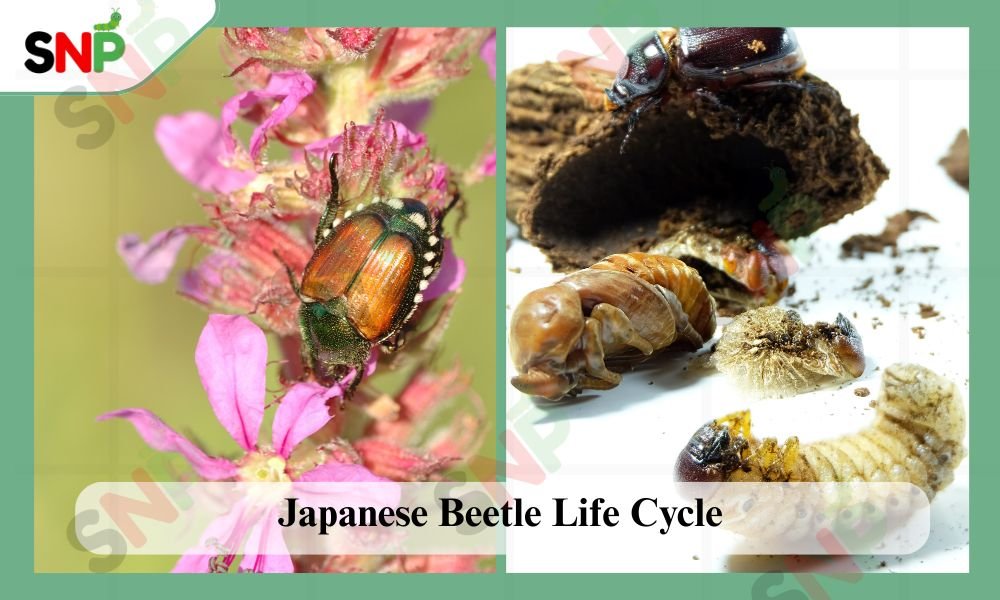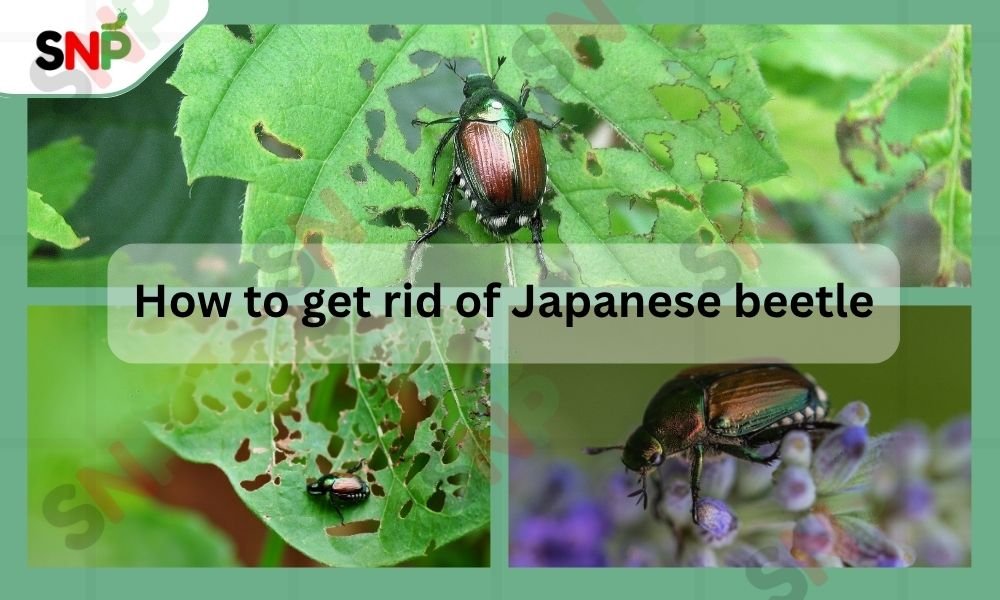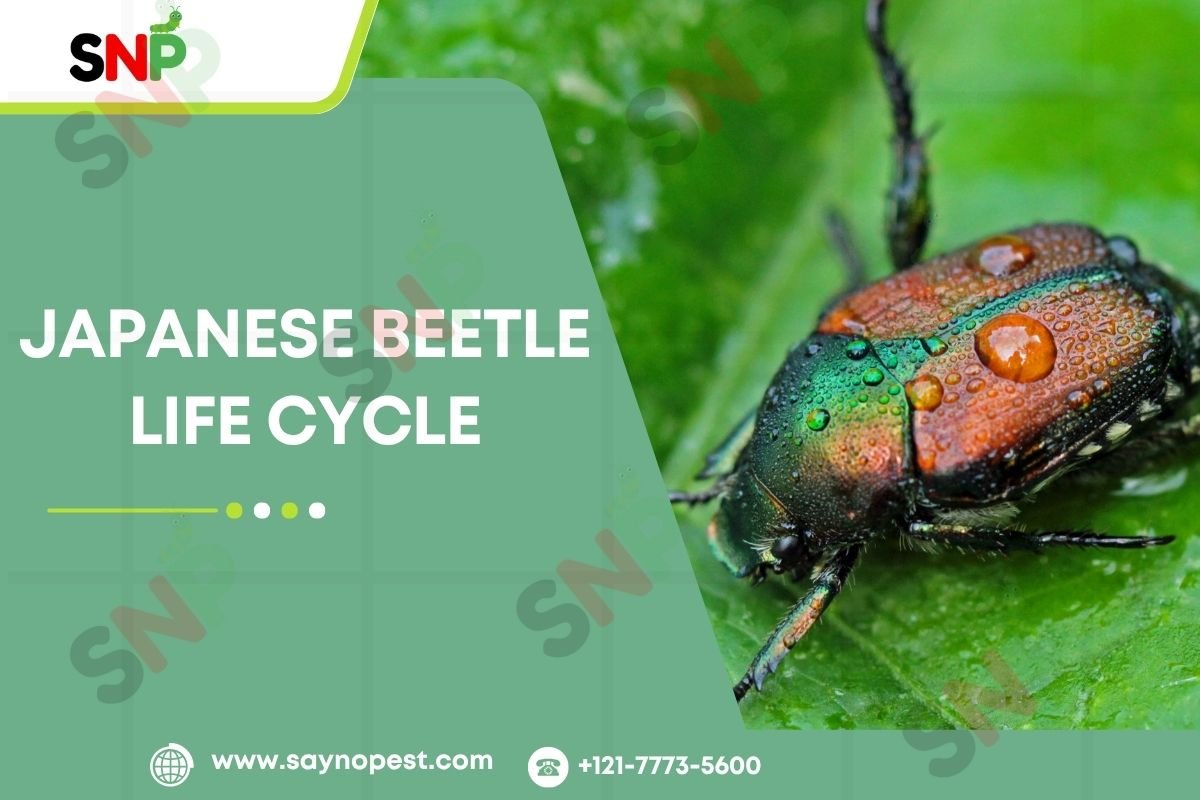The beetle known as a Japanese beetle is one of the most interesting life-cycle mealworms, yet at the same time, it is a very damaging process, and also, it is something that every American homeowner and gardener should be well informed about. Such metallic green and bronze beetles are taking nature by storm across the whole of the U.S.A. because of the feeding that is far beyond their simple need. To save you from an infestation of the pest, SayNoPest is on a mission to give you real and practical information about the Japanese beetle life cycle and teach you the methods of how to get rid of carpet beetle by using effective ways.
Japanese Beetle Life Cycle: Four Key Stages

Japanese Beetle life cycle has four important stages, those are: egg, larva, pupa, and adult. This cycling lifestyle that has been complet ensures their continuity and makes them a continuous nuisance.
Egg Stage
Since the female Japanese beetles lay their eggs after a feeding and post-mating session, they usually select a location in the soil 2 to 4 inches deep and moist with a high level of moisture in the soil to lay their eggs, then they fly back. A female may lay up to 60 eggs that have to deposited at various locations so that they are not hatch at the same spot. The eggs are small and oval-like and have a light yellow color with a smooth surface. The development period of the eggs is 14 days.
Larval Stage (Grubs)
The eggs have spawned, which are C-shaped, small, and white in color, with their heads of yellowish-brown color, thus neonates of Japanese beetle larvae. The larvae rapidly consume the grass roots that are located near the soil surface, and make brown, spongy loopholes in the lawns. By the time they develop, they have already gone through the process of molting three times (instars) and are approximately 1 inch long (figure below). In the season of fall, the larvae dig deep to survive the cold and come back to the surface to resume feeding in spring.
Pupal Stage
Following feeding in spring, the caterpillars go through the pupal stage during which they change inside the earth. This stage of non-feeding duration is approximately two weeks; after that, the adult beetles come out.
Adult Stage
Late spring to early summer, the adult Japanese beetle leaves the ground, and its life cycle is 30 to 45 days. These move about in parties and devour leaves, flowers, and fruit incessantly. The leaves, as a result of this feeding, end up with a skeleton appearance, and in case this persists, it must curbed since it can cause problems to the plants. Adults further release pheromones which amplify the attraction of more beetles, thus exponentially increasing infestations.
Japanese Beetle Larvae: The Hidden Destroyers
Japanese beetle larvae are the most damaging stage for lawns. These C-shaped grubs consume the roots of the grass, which results in brown patches where the animals, such as skunks and birds, become more active, as they dig for the grubs. The easiest way to watch this is after you have observed that the turf lifts easily or looks like it is dead in patches; it is therefore a very clear sign of a grub infestation in the lawn.
Japanese Beetle Traps: Myths and Best Practices
Homeowners greatly resort to using Japanese beetle traps to get rid of the adult beetles. The best traps use pheromones to attract the beetles that are already there, and not the ones that come from several miles away. However, it is of utmost importance where the traps will be placed—do not set the traps too close to the plants you like the most, because you might end up attracting the beetles there instead of the traps. Besides, when the traps are set properly, they pose less danger to the environment and do not result in the killing of non-targeted pest insects, but rather, only the target pest insects.
Do Japanese Beetles Bite?
The most common question that comes is Do Japanese beetles bite humans. The answer to this question is very comforting: Japanese beetles do not bite people. Their jaws are intend for plant material, not for skin. In case a situation like this arises, very rarely, if a beetle gets the impression that it is in danger, it might give a quick defensive pinch, which is very weak and sometimes it does not feel.

Signs of Japanese Beetle Infestation and How to Get Rid of Japanese Beetle
In order to control an infestation effectively, identifying it early is important. Observe for these signs:
- Skeletonized, lacy leaves on plants and trees
- Groups of adult beetles eating collectively, soft areas in lawns that can removed without effortMore frequent sightings of animals digging in your garden
- Groups of adult beetles eating collectively
- Brown, soft areas in lawns that can be removed without effort
- More frequent sightings of animals digging in your garden
How to get rid of japanese beetle include various methods:
- Hand-picking and Soapy Water: Kill them by putting the rack in the container with soapy water.
- Soapy Spray: Spray plants that need protection with a solution of mild dish soap (although it may be harmful to beneficial insects).
- Companion Planting: Grow garlic, marigolds, or catnip that are the natural enemies of beetles.
- Milky Spore Treatment: Fill the lawn with milky spore during late summer or fall for the grub stage of the beetle’s life cycle. This method reduces future populations by continuously killing the larvae.
- Proper Trap Placement: Place your Japanese beetle traps in spots that are far away from the plants that you want to protect.
Conclusion
The Japanese beetle life cycle has been a never-ending and very destructive force for the American gardens and lawns that it attacks. Understanding each phase from eggs to Japanese beetle larvae to adults is the key to finding the signs of the problem at the early stage and taking proper steps accordingly. Using traps, natural repellents, or biological controls, all those methods how to get rid of japanese beetle are the most important for the security of your landscape.
Get in touch with SayNoPest to keep yourself updated on the new pest control issues and the best solutions.
